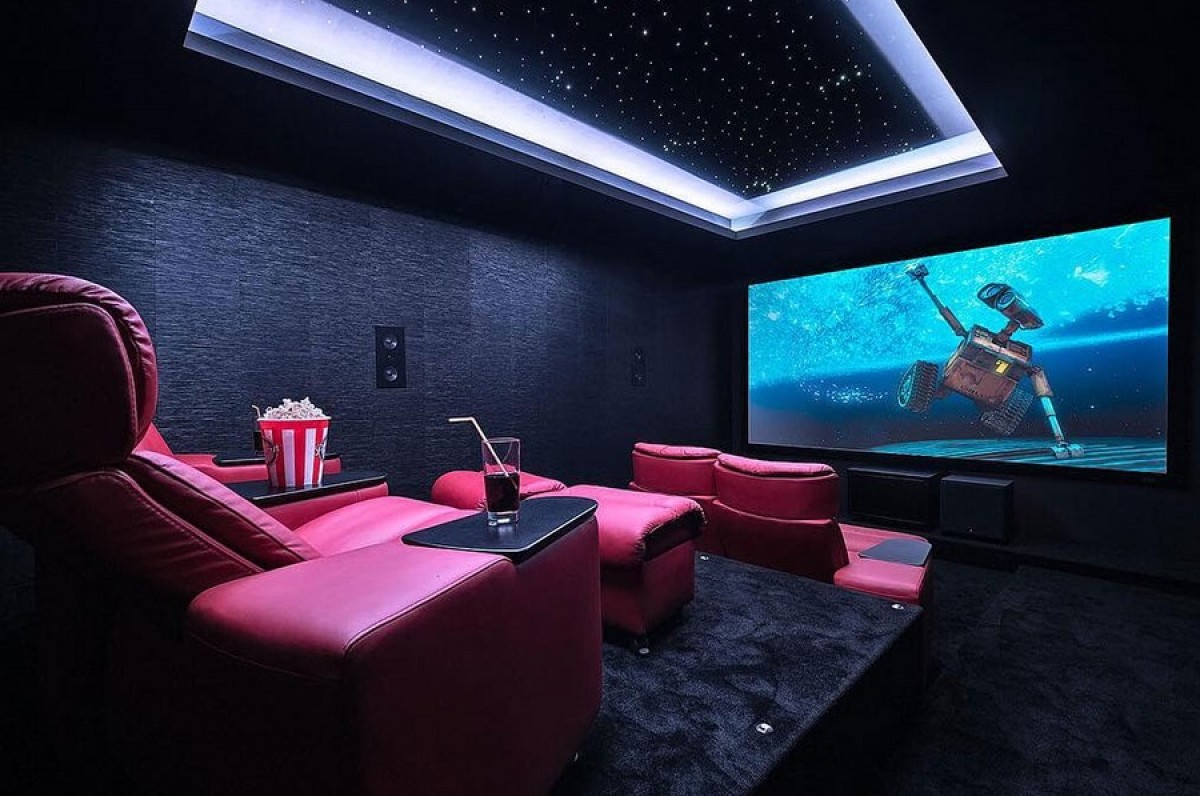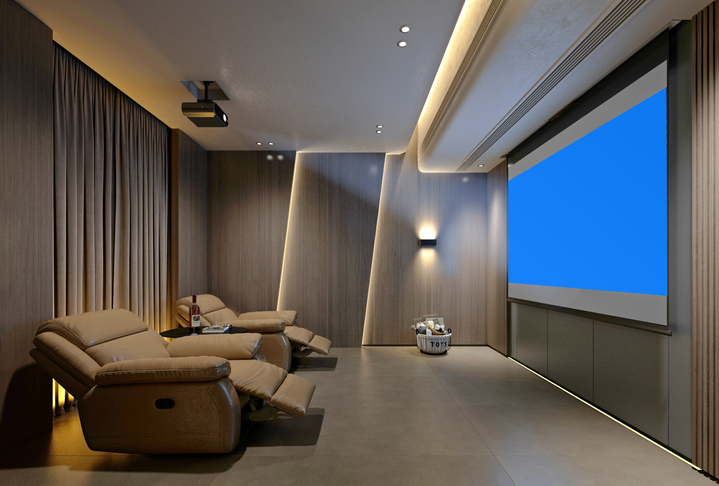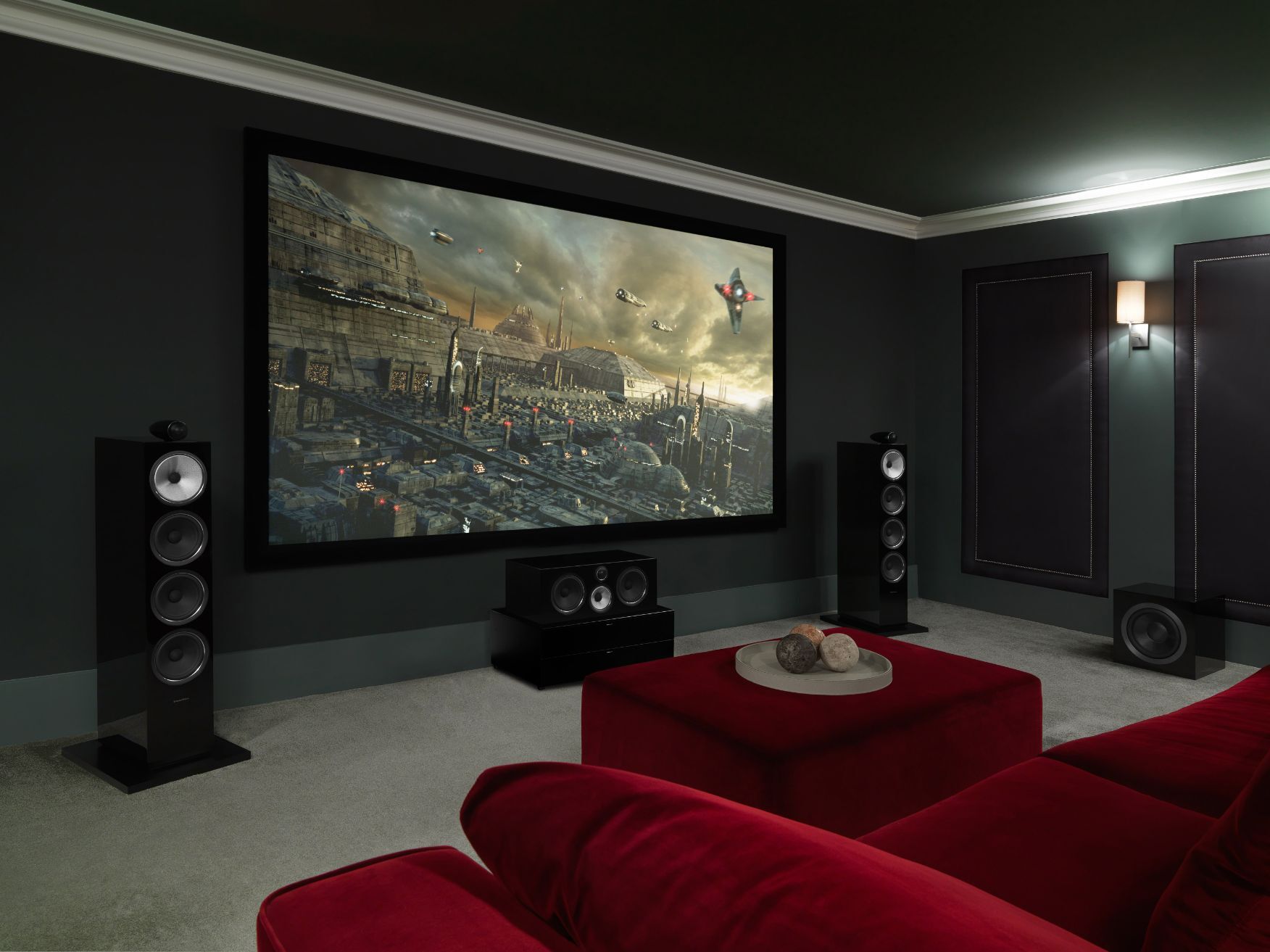Innovative Home Theater Tampa Concepts for the Stylish Home
Innovative Home Theater Tampa Concepts for the Stylish Home
Blog Article
Home Theater 101: Whatever You Required to Know for a Cinematic Experience in your home
Producing a home movie theater that equals the cinematic experience of an industrial theatre entails cautious factor to consider of multiple elements, including screen option, audio systems, and room design. Whether you are contemplating the perfect display size or the details of border noise, comprehending these basics is necessary.
Selecting the Right Screen
When establishing up a home cinema, choosing the best screen can make or break the checking out experience - tampa home theater installation. The screen works as the focal point of your setup, influencing picture top quality, seeing angles, and overall aesthetic. Secret elements to think about include display type, dimension, and resolution
First, identify the appropriate screen dimension based on your space dimensions and seating range. A basic standard is to sit approximately 1.5 to 2.5 times the angled display size for optimal watching. Next, pick in between different screen kinds, such as fixed-frame, mechanized, or retractable screens, each offering distinct benefits. Fixed-frame screens commonly supply the finest picture high quality, while motorized options permit for versatility precede usage.
Resolution is one more important element. For a genuinely immersive experience, consider a screen created for 4K or perhaps 8K web content, guaranteeing sharpness and quality. Furthermore, consider the screen's gain, which affects illumination and contrast; a greater gain can improve brightness in well-lit rooms, while a lower gain might be preferable for darker settings.
Choosing Sound Equipment
Audio tools is an important part of any kind of home cinema system, considerably boosting the total viewing experience. The selection of audio equipment can establish the deepness, clearness, and immersion of sound, important for developing a cinematic ambience.
When selecting audio devices, consider a surround stereo, which normally includes a receiver, several speakers, and a subwoofer. A 5.1 or 7.1 channel system is recommended, where the first number represents the speakers and the second the subwoofer, supplying an immersive soundscape. The receiver is the heart of the system, handling sound and video signals, and ought to sustain modern-day formats like Dolby Atmos for an enhanced spatial experience.
Quality audio speakers are essential; search for versions that provide a well balanced noise profile with excellent bass feedback. Floor-standing speakers can create richer audio, while bookshelf alternatives save space. Additionally, consider cordless options for simplicity of setup, although wired systems usually supply premium efficiency.

Optimum Seating Plans
Developing a suitable home movie theater experience hinges considerably on optimal seating plans. The arrangement of seats plays a critical duty in both convenience and viewing top quality, directly affecting the total cinematic experience.
First, take into consideration the screen size and watching distance. A common standard is to place seats at a distance around 1.5 to 2.5 times the diagonal dimension of the display. This ensures an immersive experience without straining the eyes.
Following, altitude is vital. The back rows must be higher than the front to stay clear of obstructions if your seating is in a tiered format. For flat seats, ensure that the front row is not also close to the screen, which everybody has a clear line of sight.
In addition, think about the plan in regards to social characteristics. Team seats can enhance the communal experience, while private seats may be preferred for individual viewing.

Lastly, focus on comfort with ergonomic seats that supports extensive watching durations. Including recliner chairs or supported seats can significantly boost the experience, making the home theater a recommended location for both home entertainment and leisure.
Lighting and Ambiance
Efficient lighting and atmosphere are important components of a well-designed home movie theater, as they substantially influence the watching experience. The right illumination can boost the motion picture feel, a fantastic read while bad selections can take away from it. For optimum outcomes, consider a layered illumination strategy that includes ambient, job, and accent illumination.
Ambient lighting offers basic illumination, ensuring that the room is not entirely dark, which can strain the eyes. Dimmer buttons are extremely recommended, permitting changes based upon the content being viewed. Task lighting, such as wall sconces or flooring lights, uses functional lighting for activities like reading or navigating the area without interfering with the total atmosphere.
Accent illumination can be utilized to highlight architectural features or develop centerpieces, adding deepness and passion to the area. LED strip lights behind displays or along racks can provide a refined radiance that enhances the aesthetic experience without resource frustrating the customer.

Wiring and Installation Tips
A well-planned circuitry arrangement is crucial for attaining optimum efficiency in your home theater system. Appropriate electrical wiring not only ensures premium audio and video signals however also boosts the total aesthetic of your room. Begin by drawing up your layout, identifying where each part will be put, including your screen, audio speakers, and receiver.
When choosing cords, focus on premium, properly gauged electrical wiring to reduce signal loss. HDMI cables must be utilized for video clip connections, while audio speaker cable should match the requirements of your speakers and amplifier. Choose in-wall rated wires to follow safety criteria and keep a clean appearance.

Verdict
In summary, producing an exceptional home cinema experience requires cautious factor to consider of numerous components, including display choice, audio tools, seating setups, lights, and wiring. By focusing on these aspects, a motion picture ambience can be efficiently replicated, enabling for immersive seeing experiences that equal standard movie theater settings.
Producing a home cinema that measures up to the motion picture experience of a business theater involves careful factor to consider of several elements, including screen selection, audio systems, and room format.When establishing up a home theater, selecting the right display can make or damage the watching experience. Next, choose in between various screen types, such as fixed-frame, motorized, or retracting screens, each offering unique benefits. For an absolutely immersive experience, consider a display developed for 4K or also 8K content, making sure sharpness and clearness.In summary, creating a remarkable home cinema experience calls for cautious consideration of different elements, consisting of display selection, audio tools, seating plans, lights, and electrical wiring.
Report this page